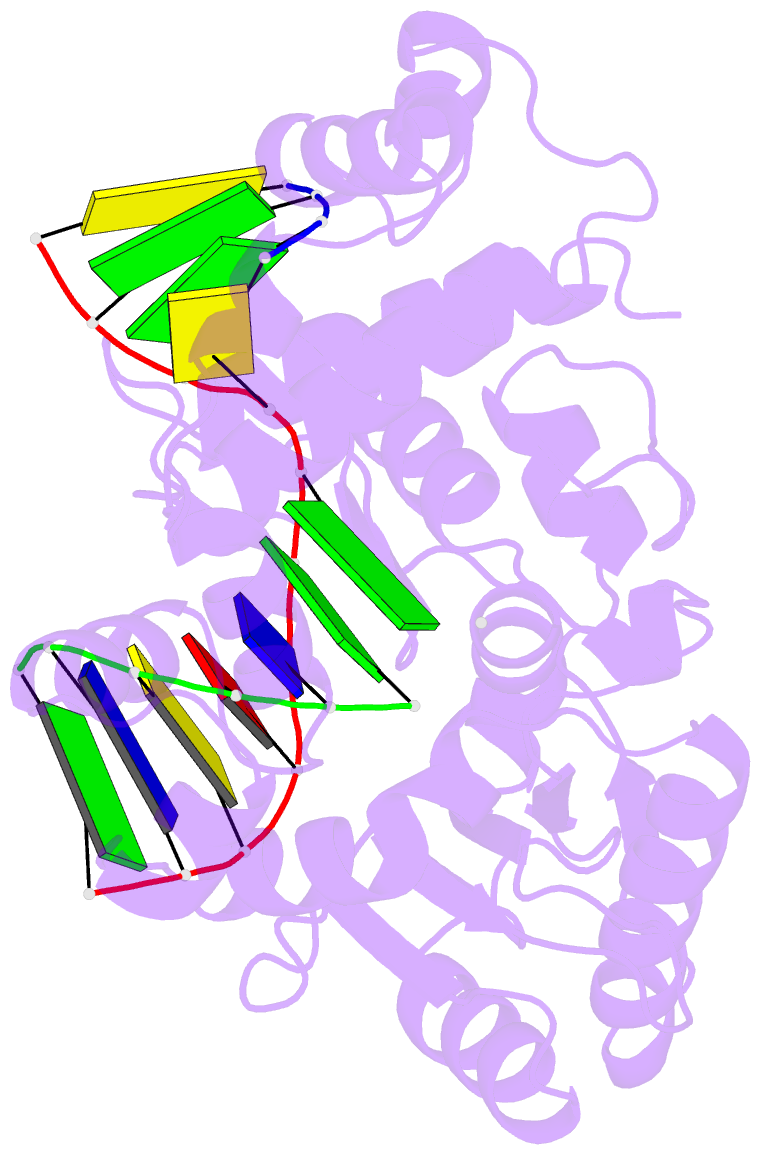Summary information and primary citation
- PDB-id
- 2pfp; SNAP-derived features in text and JSON formats;
DNAproDB
- Class
- transferase, lyase-DNA
- Method
- X-ray (2.1 Å)
- Summary
- DNA polymerase lambda in complex with DNA and dctp
- Reference
- Garcia-Diaz M, Bebenek K, Krahn JM, Pedersen LC, Kunkel TA (2007): "Role of the catalytic metal during polymerization by DNA polymerase lambda." DNA Repair, 6, 1333-1340. doi: 10.1016/j.dnarep.2007.03.005.
- Abstract
- The incorporation of dNMPs into DNA by polymerases involves a phosphoryl transfer reaction hypothesized to require two divalent metal ions. Here we investigate this hypothesis using as a model human DNA polymerase lambda (Pol lambda), an enzyme suggested to be activated in vivo by manganese. We report the crystal structures of four complexes of human Pol lambda. In a 1.9 A structure of Pol lambda containing a 3'-OH and the non-hydrolyzable analog dUpnpp, a non-catalytic Na+ ion occupies the site for metal A and the ribose of the primer-terminal nucleotide is found in a conformation that positions the acceptor 3'-OH out of line with the alpha-phosphate and the bridging oxygen of the pyrophosphate leaving group. Soaking this crystal in MnCl2 yielded a 2.0 A structure with Mn2+ occupying the site for metal A. In the presence of Mn2+, the conformation of the ribose is C3'-endo and the 3'-oxygen is in line with the leaving oxygen, at a distance from the phosphorus atom of the alpha-phosphate (3.69 A) consistent with and supporting a catalytic mechanism involving two divalent metal ions. Finally, soaking with MnCl2 converted a pre-catalytic Pol lambda/Na+ complex with unreacted dCTP in the active site into a product complex via catalysis in the crystal. These data provide pre- and post-transition state information and outline in a single crystal the pathway for the phosphoryl transfer reaction carried out by DNA polymerases.





